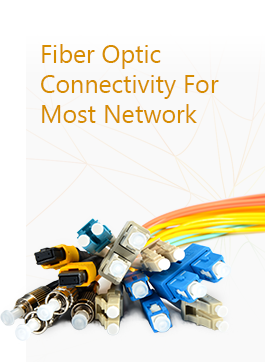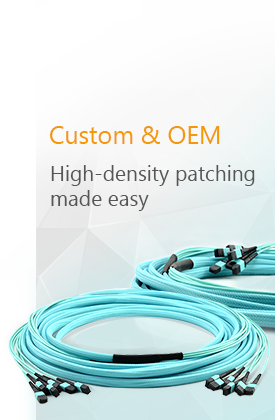An SFP+ cable differs from an SFP cable in several key aspects, including data transmission speed, application scenarios, and some technical specifications. Here's a detailed comparison:
Data Transmission Speed
- SFP Cable: SFP (Small Form-factor Pluggable) cables support a wide range of data transmission speeds, typically ranging from 1Gbps to 10Gbps, although some models may support higher speeds.
- SFP+ Cable: SFP+ (Small Form-factor Pluggable Enhanced) cables offer higher data transmission speeds, with support for speeds ranging from 10Gbps to 40Gbps or even 100Gbps. This makes SFP+ cables more suitable for high-speed network environments.
Application Scenarios
- SFP Cable: SFP cables are commonly used in network environments where high-speed data transmission is required but bandwidth demands are not excessively high. Examples include metropolitan area networks (MANs) or medium-distance telecommunications. They are suitable for networks seeking cost-effective solutions without extensive bandwidth requirements.
- SFP+ Cable: SFP+ cables are widely used in scenarios where higher data throughput is crucial. These include data centers, enterprise networks, and high-speed storage facilities. The design operating speed of SFP+ modules can reach up to 16Gbps, a significant increase compared to traditional SFP modules.
Technical Specifications and Features
- Connectors: Both SFP and SFP+ cables use LC-type connectors, maintaining consistency in interface design.
- Modular Design: Both types of cables feature a modular design that allows for easy installation, removal, and replacement, enhancing the flexibility and scalability of the network.
- Power Consumption and Cost: While SFP+ cables may have a slightly higher price tag compared to SFP cables, the performance benefits they offer often justify the cost in long-term applications. Additionally, with technological advancements and market expansion, the price gap between SFP and SFP+ cables is narrowing.
Additional Considerations
- Compatibility: When selecting an SFP or SFP+ cable, it's crucial to ensure compatibility with existing equipment and systems to maintain network stability and scalability.
- Future Expandability: Consider whether the selected cable supports future expansions, such as adding more devices or increasing data rates.
In summary, SFP+ cables offer higher data transmission speeds and are more suitable for high-speed network environments compared to SFP cables. However, SFP cables remain a reliable choice for networks that need to leverage existing infrastructure or have less stringent bandwidth requirements. Understanding these differences can help network professionals make more informed decisions to ensure their networks are both efficient and cost-effective.


